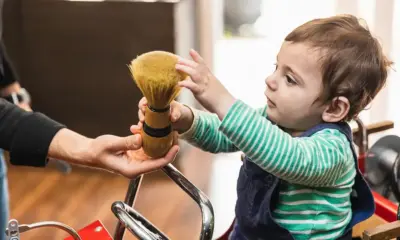Education
Creating a Reward System That Works for Children

Reward System for Children: A Guide to Positive Reinforcement at Home
Many parents find that a Reward System for Children can help reduce tantrums and encourage positive habits early in life.
How Reward Systems for Children Work Effectively
Parents can improve behavior by emphasizing successes instead of punishing mistakes, which encourages children to repeat those good behaviors consistently.
Dr. Katarzyna Bisaga explains that when children receive praise for positive actions, they feel proud and repeat those behaviors more regularly.
She developed a Reward System for Children when her son resisted daily routines, shifting focus from nagging to reinforcing each successful habit.
For instance, her son earned points every time he completed tasks like brushing his teeth or putting away his shoes independently.
By tallying points weekly and offering small monetary rewards, she reinforced responsibility while building trust and self-esteem through consistent routines.
Reward Systems for Toddlers and Preschoolers
Younger kids benefit from immediate, visual reinforcement because they respond better to short-term goals and simple tracking tools like sticker charts.
Give one sticker for each completed task such as dressing themselves or saying polite phrases like “please” and “thank you.”
Combine short-term and long-term goals by letting them trade stickers for privileges like extra storytime or a new coloring book.
Choose simple visuals like grids for children who can’t count, offering rewards for every completed line on their sticker chart.
Avoid offering random extra rewards; instead, stick to pre-established behaviors tied to specific rewards for better consistency and understanding.
Creative Types of Reward Charts
Parents can personalize reward systems using dimes in jars, fridge magnets, fun tally points, or digital apps tailored to young children.
Visual representation is important for younger children, so use tools that they can see and understand easily during their routine.
Key Tips for Rewarding Toddlers Effectively
Give the reward immediately after the desired behavior to help the child connect actions with positive outcomes right away.
Start with one behavior goal at a time to avoid confusion, and expand only once the first behavior is clearly established.
Offer generous praise with every achievement, since young children crave attention and will repeat behaviors to receive it consistently.
Speak in age-appropriate language that makes behavior goals clear, like saying “say thank you” instead of “show gratitude.”
Avoid using the reward system as bribery, especially in public settings, as this can encourage manipulation and tantrums over time.
Reward Systems for School-Aged Kids
As children mature, they can manage more complex systems with points, allowing parents to introduce larger goals and stronger incentives.
For example, a child may earn a trip to the park, game time, or money in exchange for accumulated points over a week.
Let children trade daily points for small perks and weekly points for bigger rewards like a movie night or an exciting new toy.
Use monthly milestones to offer special rewards, helping kids understand delayed gratification and the value of long-term goals.
Strategies to Help Older Kids Succeed
Track multiple behaviors like homework completion, cleaning, kind words, and managing emotions using a point chart that offers flexibility and fairness.
Assign higher points to tasks that require more responsibility, and make sure your expectations are clearly defined and written down.
Some parents remove points for misbehavior, but experts warn that this can reduce motivation, so explain rules carefully if you do.
Instead of subtracting points, consider setting clear consequences like limited screen time or additional chores for repeated negative behavior.
Add deadlines for certain tasks like making beds or finishing chores before dinner to teach time management and build discipline.
Include Children in Planning Rewards
Ask kids which rewards motivate them most to increase buy-in. Tailoring prizes increases excitement and ensures stronger behavioral results.
For instance, while one child may love video games, another may prefer special time at the playground with their parents.
Consistency Is Crucial for Long-Term Results
A Reward System for Children only works when parents remain consistent, tracking progress daily and offering praise at every opportunity.
Even simple sticker charts require effort, but they teach accountability and set up long-lasting habits that benefit family life overall.
Staying involved shows children that their hard work matters and encourages them to keep trying even when things feel challenging.
Final Thoughts on the Power of Reward Systems
The Reward System for Children helps shape behavior by focusing on what children do right instead of punishing them for mistakes.
Every family can tailor these systems to their unique needs, whether using stickers, points, or digital tools that offer real-time feedback.
Always keep your child’s personality, maturity level, and interests in mind when creating goals and choosing suitable rewards.
Positive reinforcement doesn’t mean ignoring discipline but focuses on building habits through encouragement, praise, and visible progress toward meaningful goals.
Explore more parenting strategies, child behavior tips, and expert-backed guides by visiting our website and learning what works best for you.












